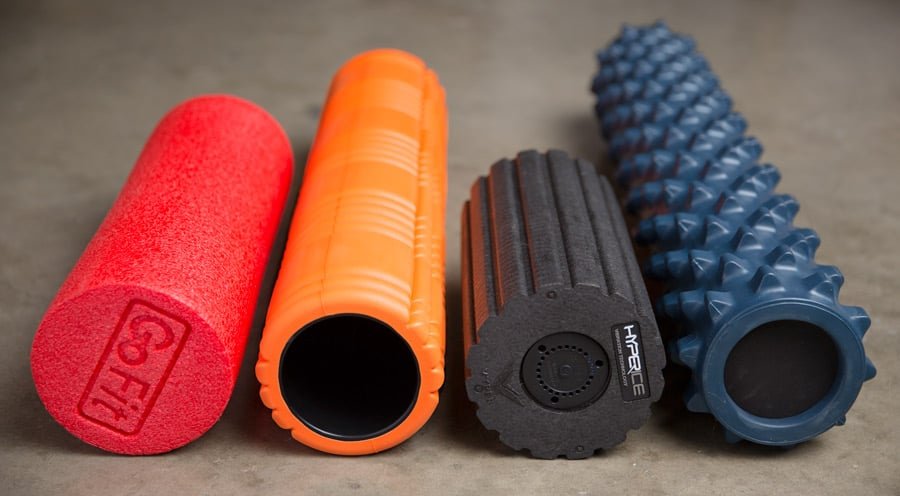Rewards From Foam Rolling
Foam rolling is a method that is used to release muscle tension which can be done before or after exercise. But, how do you foam roll, does it actually work, what is the best roller to use, and why does it hurt so much? Well, there is no one right way to foam roll, but there are techniques you can learn to use while rolling out to receive the most benefit. Many people know what foam rolling is, but do not know the benefits, reasons, or ways foam rolling actually works with your muscles. Some overall benefits of foam rolling include warming up your tissue, increasing the Range-of-motion (ROM), increasing blood circulation, reducing muscle soreness, reducing pain, and helps with relaxation. Foam rolling is a self-myofascial release (SMR), but rolling over muscles involves a pain that many describe as “hurts so good”. It feels a little uncomfortable, and your love-hate relationship with the roller and your muscles. The benefits vary slightly from person to person, but in a study titled Foam Rolling for Delayed-Onset Muscle Soreness and Recovery of Dynamic Performance Measures, eight male participants found that foam rolling substantially improved muscle tenderness by a moderate to a large amount in the days following workouts. Thus, leading to the conclusion that foam rolling effectively reduced delayed-onset muscle soreness (DOMS) and increased their performance quality.
For many years it was thought that static stretching (SS) was the best method to try when wanted to increase joint ROM. An example of ROM would be standing up and then bending down to touch your toes. SS is any stretch without movement. Even with its great advantages, SS is also associated with a slight loss in performance. One study thought that when SS partnered with foam rolling, the joint ROM would increase. A study titled Comparing the Effects of Self-myofascial Release with Static Stretching on Ankle Range-of-motion in Adolescent Athletes compared the effects of SS, foam rolling, and a combination of both on the ankle joint. Both SS and foam rolling were found to lead to an increase in flexibility, but the combination of SS and foam rolling appeared to have an additive effect when comparing them alone.
Now, I know you have some questions flowing into your brain right now. Like how does foam rolling actually work, what are the benefits, and there are many different types out there so I am not sure which one would be best? Well first off, no foam roller can lead you in the wrong direction, but I will answer all these questions and more now that you see the benefits.
Foam rolling increases the mobility of the muscle, fascia, and other connective tissues surrounding a joint. There are many benefits to foam rolling before and after a workout. Rolling before a workout helps with warming up the tissue, preparing the body for the workout, and making the tissue more pliable, so it is less likely to get injured. Usually, tissue stiffness happens after staying sedentary for a few hours prior to work out. Form rolling reduces DOMS by preventing muscle sticking, like a muscle knot. While also increasing the circulation of oxygenated blood to the drained muscles after exercising. This means it reduces inflammation and soreness in and around that muscle joint. This reduced muscle soreness decreases DOMS which helps increase your ROM!
Finally, form rolling at the conclusion of a workout also comes with psychological benefits of relaxation and overall mood. Ending an exercise routine with foam rolling can increase feelings of overall well-being and workout satisfaction. This then leads you into a feeling also known as, remembered pleasure, as you leave your workout. Meaning, that because you left with increased overall well-being and satisfaction, you will most likely remember working out more enjoyable, pleased, and more likely to exercise again. It is this loop of benefits that all stems from simply foam rolling your muscles.
Seeing the benefits of what foam rolling can actually do, there are many different types of rollers and techniques you can learn to get the largest benefit per muscle. A big cylinder roller might be better for larger muscle groups, like the quads and hamstrings. However, a small golf ball size roller might be better for your feet. Depending on the roller you are using, there might also be ridges, spikes, groves, dots, and vibrations which all used to enhance circulation by providing more concentrated pressure to a more precise area(s). No matter what type of foam roller or rolling ball you might have to use, anything is better than nothing when it comes to helping your muscles and joints with many benefits.





